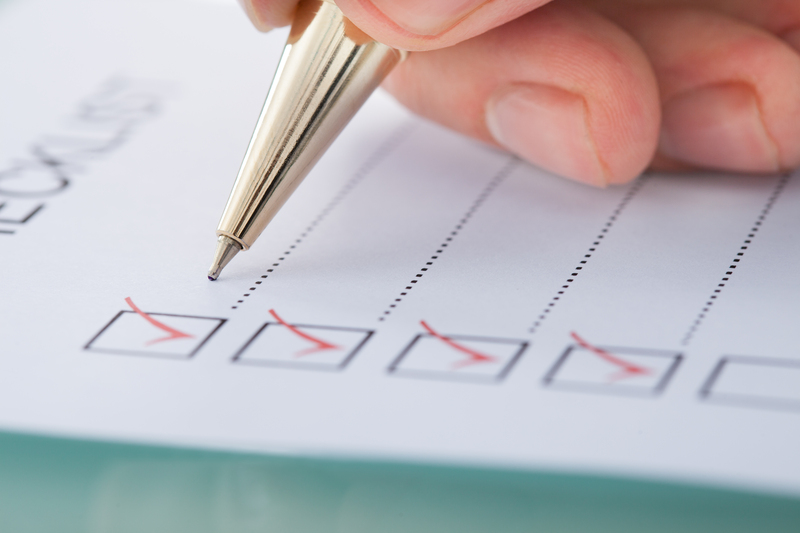The Technical Side of Moving a Piano and the Risks of Doing It Alone
Moving a piano is a challenging yet essential task for owners planning a relocation. This complex, heavy musical instrument requires an understanding of its structure and a methodical approach to moving. Both upright and grand pianos possess unique intricacies that add layers of complexity. If you're contemplating a DIY piano move, it's vital to be informed about the technical aspects and the significant risks involved. This comprehensive guide details the mechanics, required equipment, and safety concerns of moving a piano. It also explores why hiring professionals is often the wisest route.
Understanding the Construction of Pianos
To fully grasp the technical side of piano moving, it's essential to first understand how these instruments are built. Pianos are precision-engineered, combining art and science in their construction.
Anatomy of a Piano
- Upright Pianos:
- Typically weigh 300-500 lbs (136-227 kg).
- Contain a vertical string and soundboard configuration.
- Despite their relatively compact size, their height and awkward weight distribution make them difficult to maneuver.
- Grand Pianos:
- Range from 500-1,200 lbs (227-544 kg), depending on size.
- Feature a horizontal frame, making them more cumbersome.
- Unique shape necessitates careful movement strategies, including leg removal.
Why Are Pianos So Heavy and Delicate?
Pianos feature thousands of components:
- Cast iron frame: Provides strength but contributes to the weight.
- Strings: Hundreds of high-tension steel wires, easily affected by force or jarring movements.
- Wooden soundboard: Delicate and prone to cracks if mishandled.
- Action mechanism: Composed of tiny, intricate parts that can be damaged by vibrations or impacts.
These details highlight why moving a piano is technically demanding. Not only does the weight present a challenge, but protecting these sensitive components requires expertise and special equipment.

The Equipment Required for a Safe Piano Move
Attempting a piano removal without proper tools significantly increases the risk of injury and damage. Here are the essentials professionals use:
- Heavy-duty piano dolly: Specially designed to bear the instrument's weight and allow smooth rolling on flat surfaces.
- Piano skid board: Used for grand pianos, this board allows the instrument to be strapped down and maneuvered safely.
- Furniture straps and harnesses: Secure the piano and help distribute weight evenly among movers.
- Moving blankets and pads: Protect the piano's finish and delicate inner workings from bumps and scratches.
- Protective gloves:Improve grip and guard against hand injuries.
- Stair ramp/boards: Essential for navigating steps without jarring the instrument.
- Tool kit: For partial disassembly, such as removing the legs, pedals, or lid of a grand piano.
- Measuring tape: Ensures the piano fits through doorways and hallways without incident.
Even with access to the right equipment, the knowledge required to use it properly comes from experience. This is why professional piano movers are worth considering if you value your instrument.
Key Steps in Professional Piano Moving
The technical process of moving a piano follows a precise order. Below we break down the fundamental steps involved:
1. Assessment and Planning
- Measuring: Doorways, corridors, and staircases are measured to identify challenges in advance.
- Route planning: The best path is mapped and obstacles are removed from the way.
- Piano type consideration: Each piano requires a custom approach depending on its structure and weight.
2. Securing and Preparing the Piano
- Lid and keyboard: The cover is locked or secured to prevent accidental opening.
- Padding: Moving blankets cover all exposed surfaces to protect the finish and inner workings.
- Disassembly: For grand pianos, legs and pedals may be removed and wrapped separately for transport.
3. Lifting and Transporting
- Lifting: Using proper technique, the piano is lifted with coordinated effort, never dragging to avoid frame strain.
- Balancing: Ensuring even weight distribution to prevent tipping and internal damage.
- Using dollies and skids: The piano is secured on a dolly or skid board for stable movement.
- Negotiating stairs or tight corners: Employing ramps and team coordination to prevent impacts or falls.
4. Loading into the Vehicle
- Securing in the truck: Strapping the piano to prevent shifting during transit.
- Shock absorption: Using blankets and pads to reduce vibration and prevent jarring shocks.
5. Unloading and Setup
- Reassembly: If parts were removed, they are carefully reattached.
- Positioning: The piano is precisely placed in its new location.
- Tuning: After a move, a professional tuning is recommended due to potential shifts in internal tension.
Professional movers meticulously follow these steps to minimize risks to the instrument and to themselves.
The Dangers and Risks of Moving a Piano Alone
Attempting to move a piano without professional help exposes you to various hazards--both to the piano and yourself. Even with strong friends, the risks can quickly outweigh the perceived savings.
Potential Physical Injuries
The sheer mass and awkwardness of a piano's weight make it a source of numerous potential injuries:
- Back injuries: Poor lifting technique or sudden slips can cause serious back strain or spinal damage.
- Crush injuries: Fingers, hands, or feet can be trapped beneath the piano if it tips or slips.
- Smashed toes and hands: Even a shift of a few inches can crush extremities.
- Joint injuries: Wrists, knees, and shoulders are vulnerable under heavy, shifting loads.
- Falls: Stairways in particular present a fall risk for both the piano and the movers.
Risks to Your Property and the Piano
- Wall and floor damage: Even minor bumps can chip paint, dent drywall, or gouge hardwood floors.
- Doorways and moldings: Tight fits can result in scratches, chips, or broken door frames.
- Piano tune and structure: Impacts and vibrations may jar strings out of tune, warp the frame, or break fragile components.
- Finish damage: Nicks, scratches, and dents diminish both aesthetic and monetary value.
- Total loss: In severe cases, pianos have tumbled down stairs or fallen, resulting in total destruction.
Unseen Complications When Moving a Piano Solo
- Lack of experience: Misjudging the center of gravity or maneuvering through narrow passages can have disastrous consequences.
- Insufficient team: Some pianos require four or more experienced movers.
- No insurance: Without professional coverage, you bear all financial responsibility for damages or injuries.
- Improper equipment: Common moving tools may not be suitable for the unique requirements of piano relocation.
Common Mistakes Made During DIY Piano Moves
- Underestimating weight and size: Many people do not realize just how heavy their piano is until it's too late.
- Failing to secure components: Leaving the lid or keyboard unsecured can lead to catastrophic internal damage.
- Incorrect lifting techniques: Lifting with the back, without bending knees, puts you at serious risk.
- Skipping protection: Not using pads or blankets exposes both piano and home to damage.
- Moving alone: Attempting any piano move without adequate manpower or expertise is extremely hazardous.
Benefits of Hiring Professional Piano Movers
The advantages of hiring professional piano movers extend well beyond convenience. Here's why you should trust the experts:
- Specialized knowledge and equipment: They are trained to handle all types of pianos, using the right tools and proven techniques.
- Proper insurance: Professionals carry insurance covering both your piano and your property during the move.
- Prevention of injury: Expert movers minimize your personal risk.
- Preservation of piano value: Efficient handling protects delicate mechanisms and fine finishes.
- Timely and stress-free: The process is faster and more efficient than a DIY attempt.
- Assistance with post-move setup: Some services include tuning or adjusting your piano after the move.
Choosing the Right Piano Moving Service
- Check references and reviews: Reputation is critical when entrusting your valuable instrument to movers.
- Ensure proper licensing and insurance: Never hire any company that cannot provide these credentials.
- Ask about experience: Years in business and number of piano moves completed are telling indicators of expertise.
- Get a written estimate: Avoid surprises by requesting a comprehensive quote in advance.
Piano Moving Tips for Owners
If you must participate in a piano move (or simply want to know more), here are expert tips to minimize risks:
- Never lift alone: Always have sufficient manpower.
- Clear the route: Make sure all paths are free of clutter or obstacles.
- Take your time: Rushed movements increase the chances of error.
- Secure moving parts: Ensure lids, pedals, and benches are removed or locked down.
- Protect your home: Use thick blankets or mats to shield doors, walls, and floors.
- Consider insurance: Check your homeowner's or renter's policy for coverage or purchase supplemental moving insurance.

Piano Moving FAQs
- Can I move an upright piano by myself?
It is strongly discouraged. Even smaller uprights can cause injury or damage when moved without the proper team and equipment. - Do I need professional movers for a short-distance piano move?
Yes. Most damages occur over short distances due to underestimating risks or skipping protective measures. - How much does professional piano moving cost?
Prices vary based on size, distance, and complexity, but the cost is usually much less than the value of the piano itself or the potential cost of repairs if something goes wrong. - How soon should I tune my piano after a move?
Experts recommend waiting at least 2-4 weeks for the piano to settle before scheduling a tuning.
Conclusion: The Savvy Way to Move a Piano
Moving a piano requires far more than muscle--it demands specialized tools, a keen understanding of piano mechanics, and strategic planning at each step. The risks of doing it alone span from serious injury to catastrophic loss of your cherished instrument. Skilled professionals not only safeguard your piano but also protect your property, peace of mind, and wallet. Before embarking on a DIY piano move, weigh these technical factors, prioritize safety, and consider the long-term preservation of your instrument. When it comes to pianos, the wise move is often calling in the experts.



